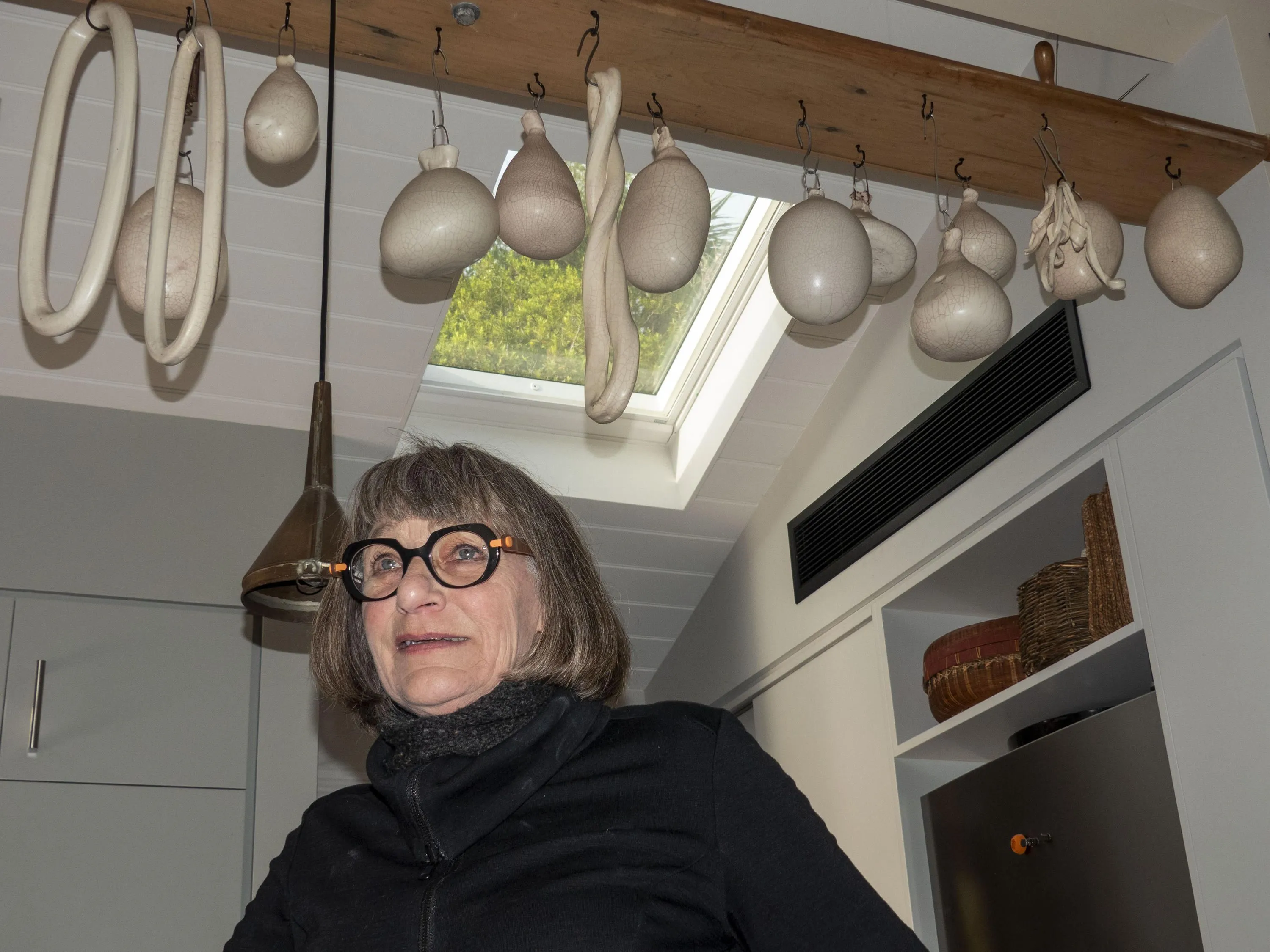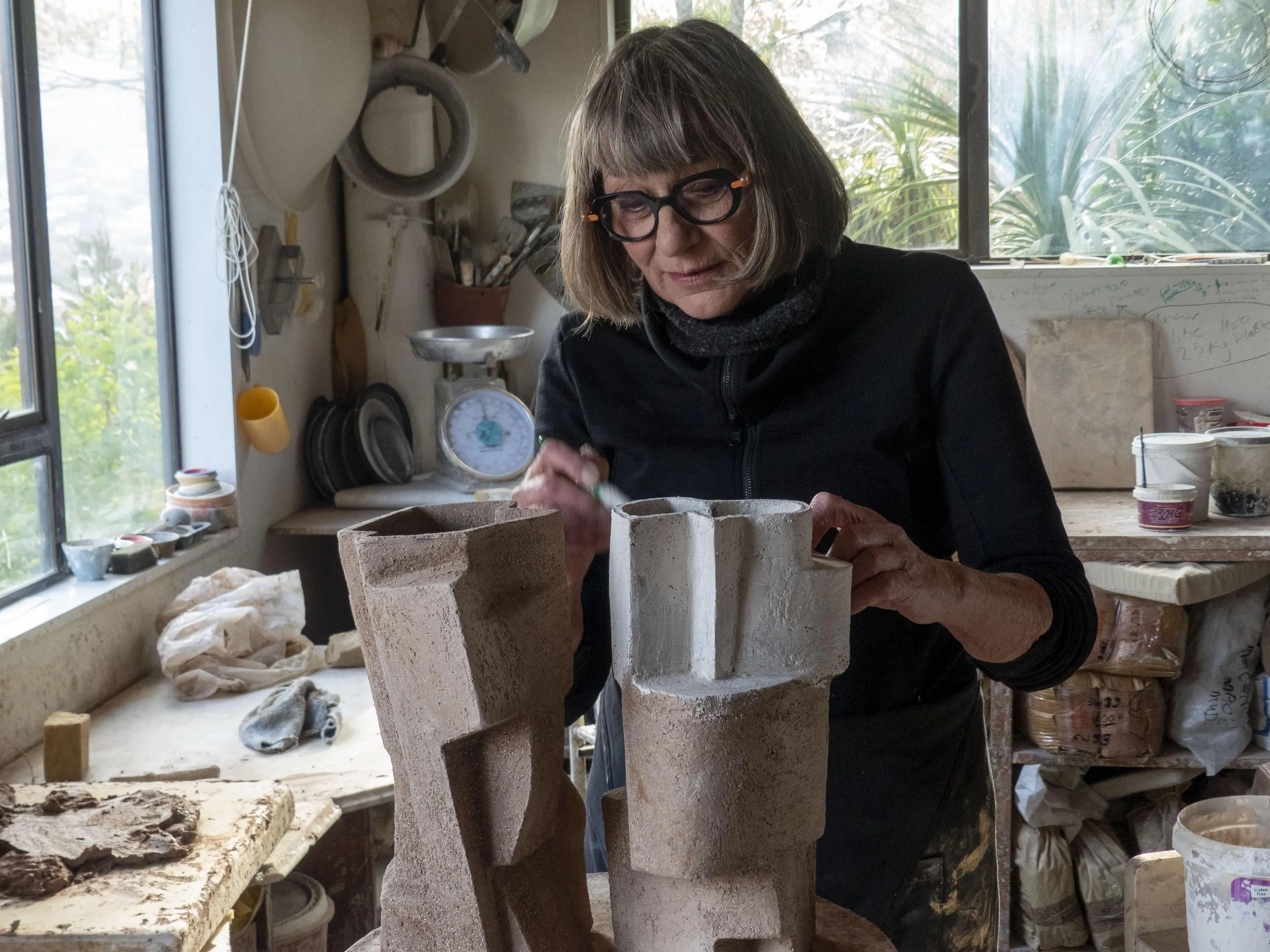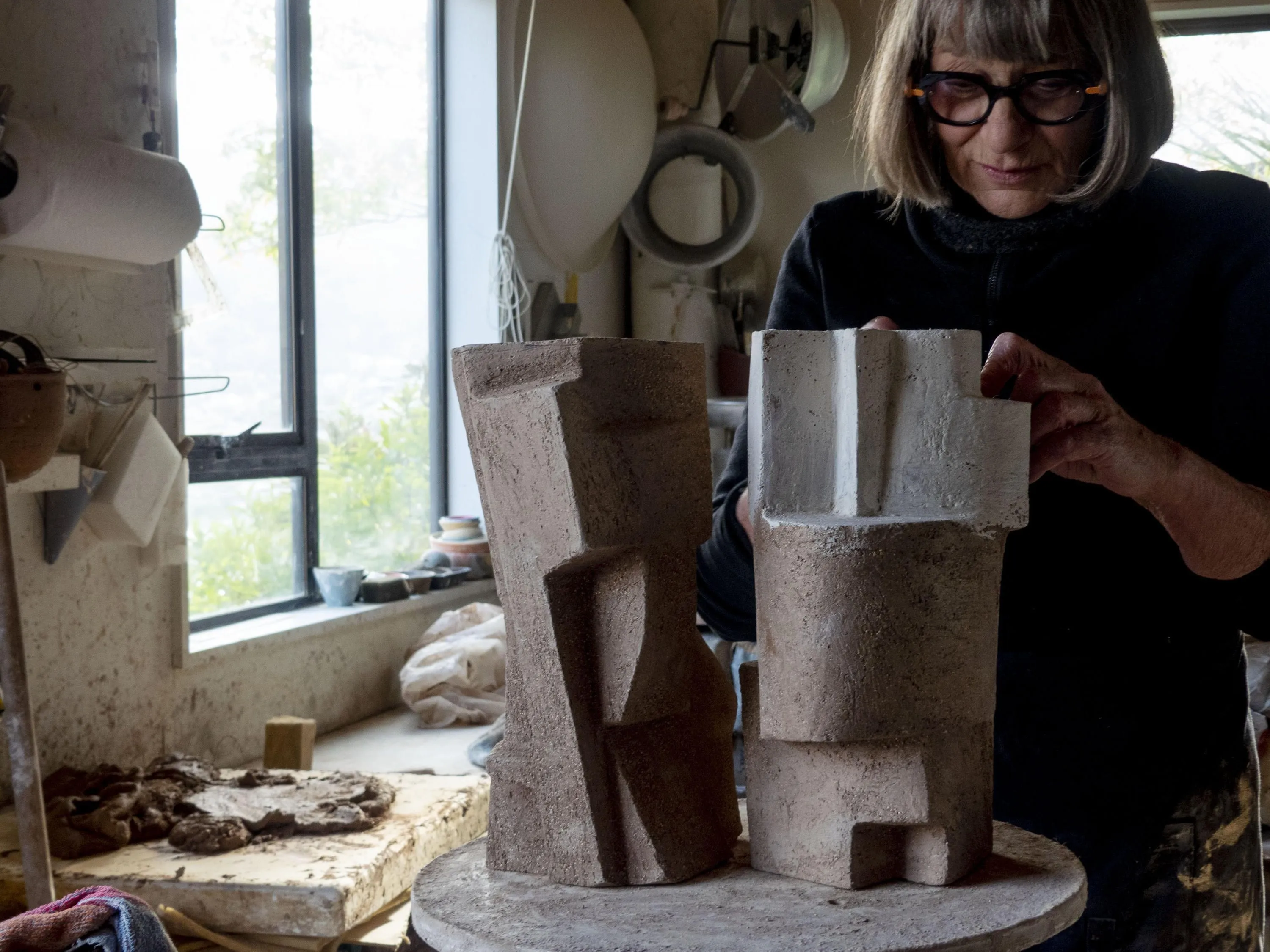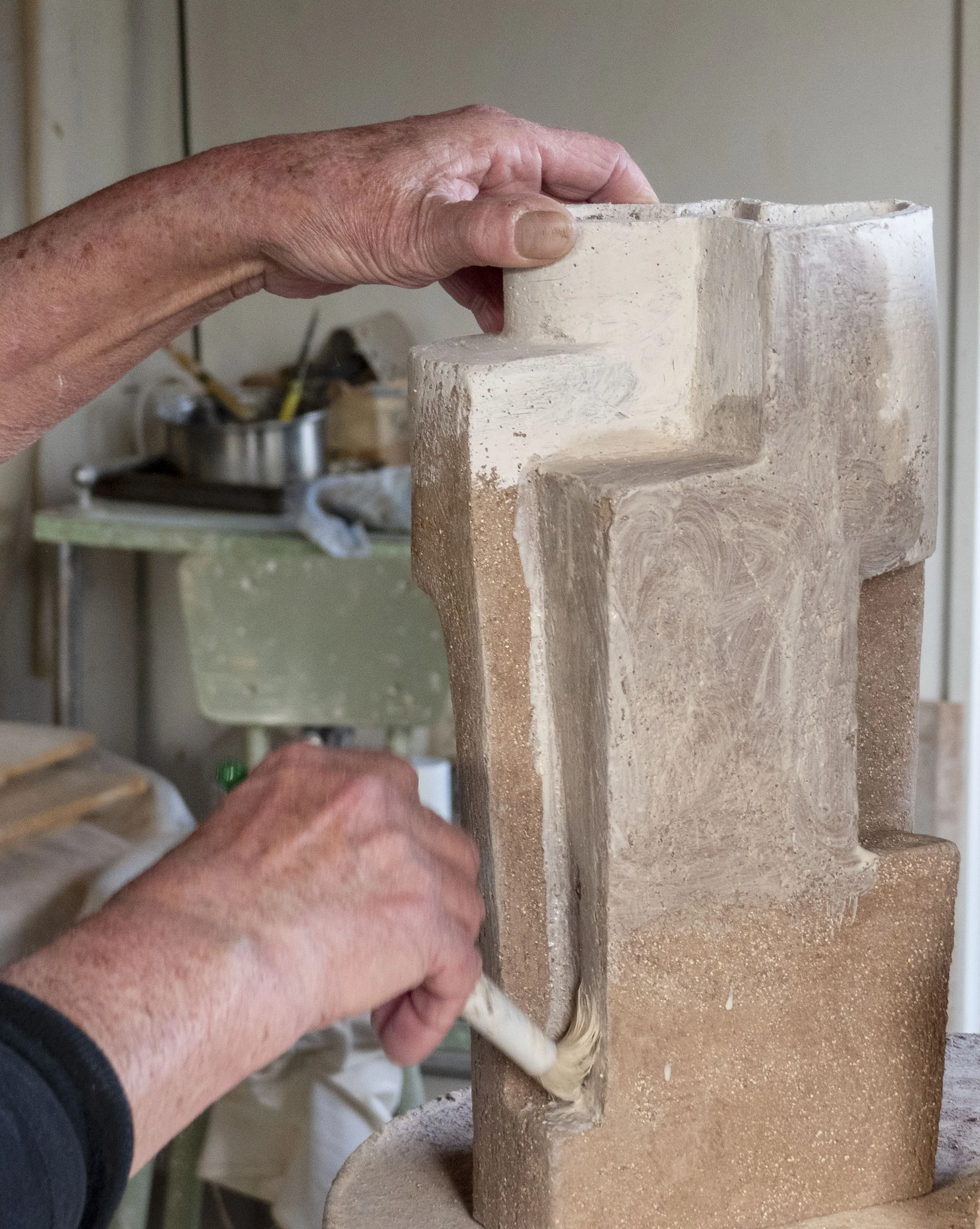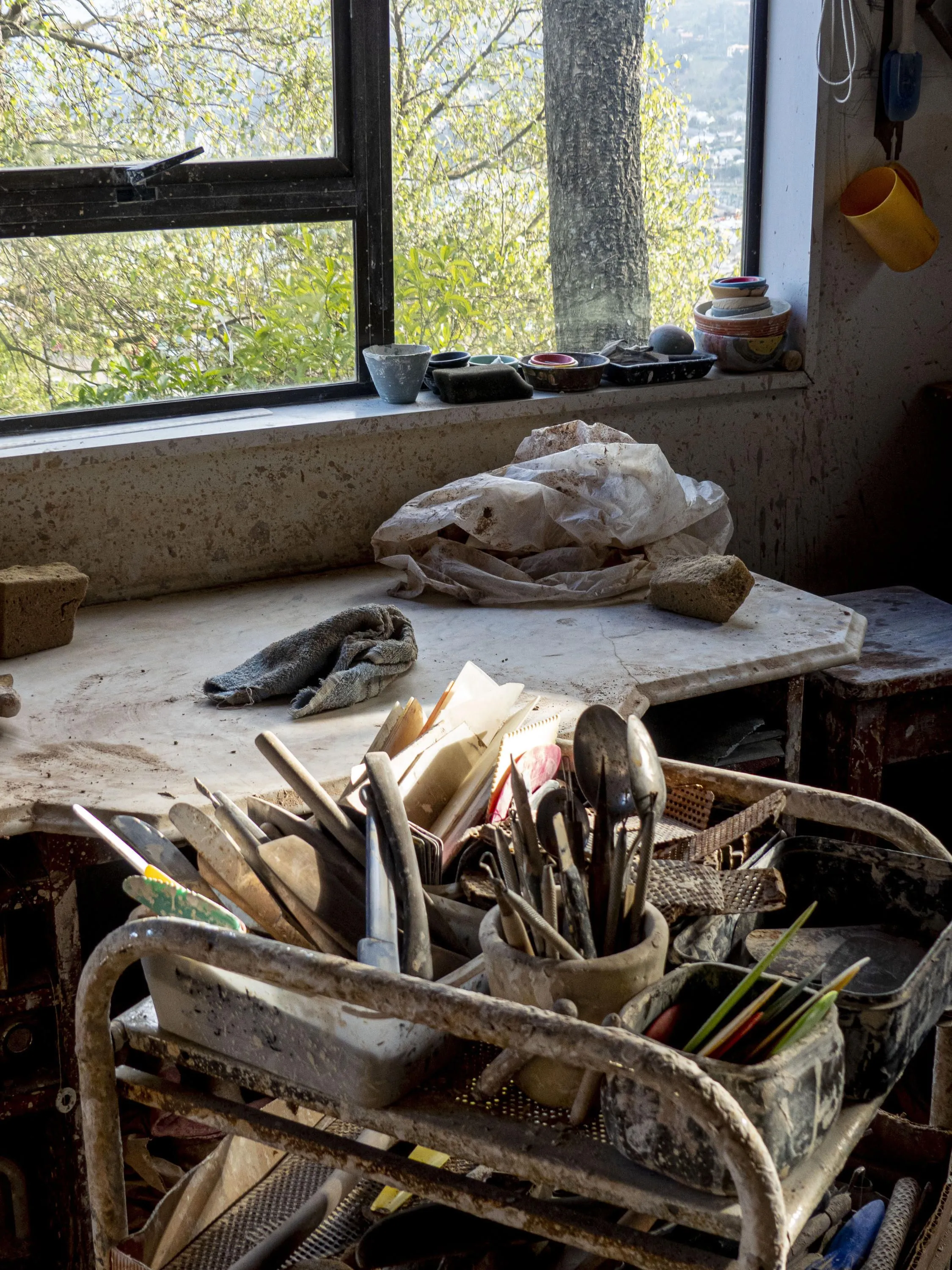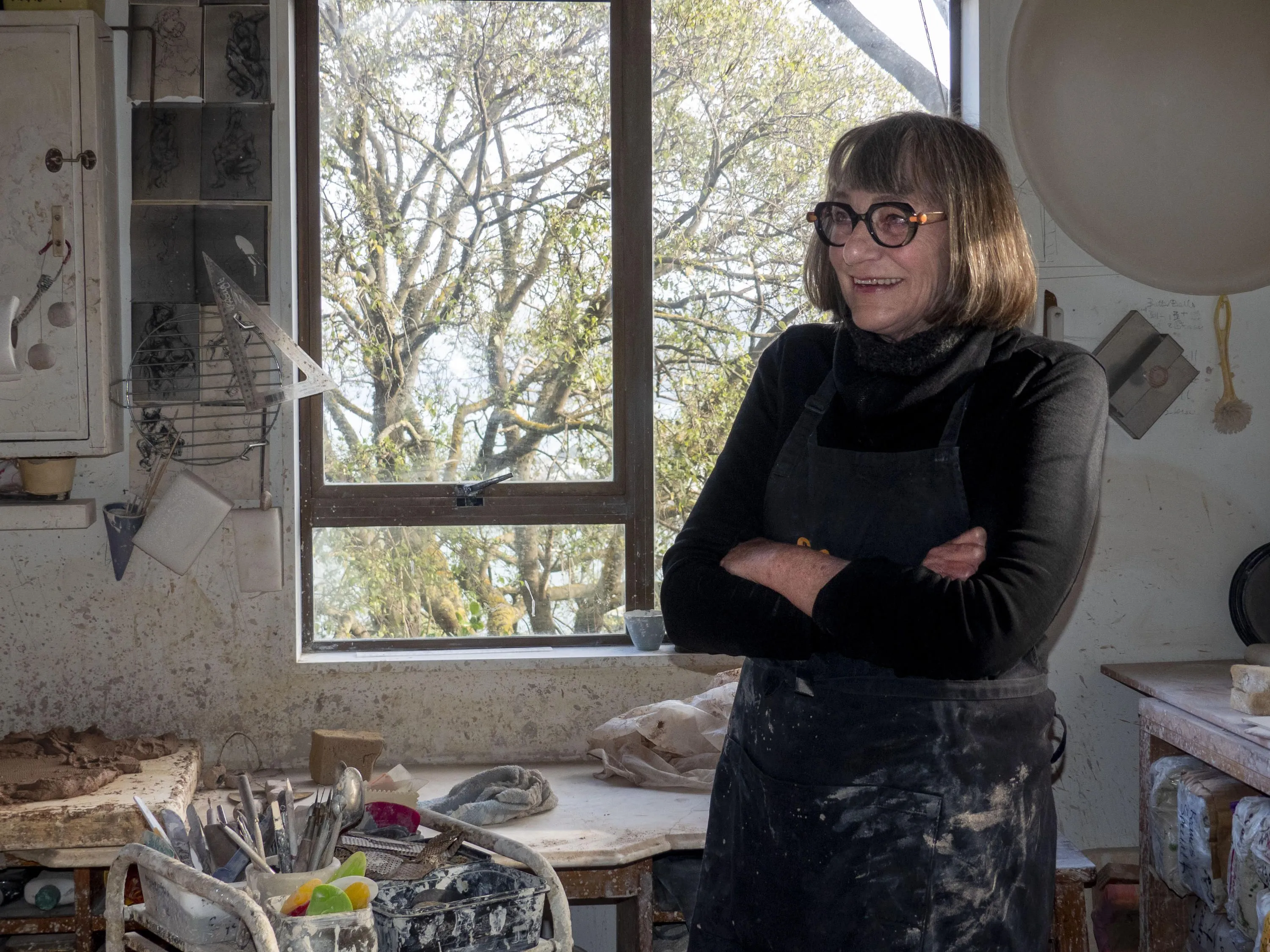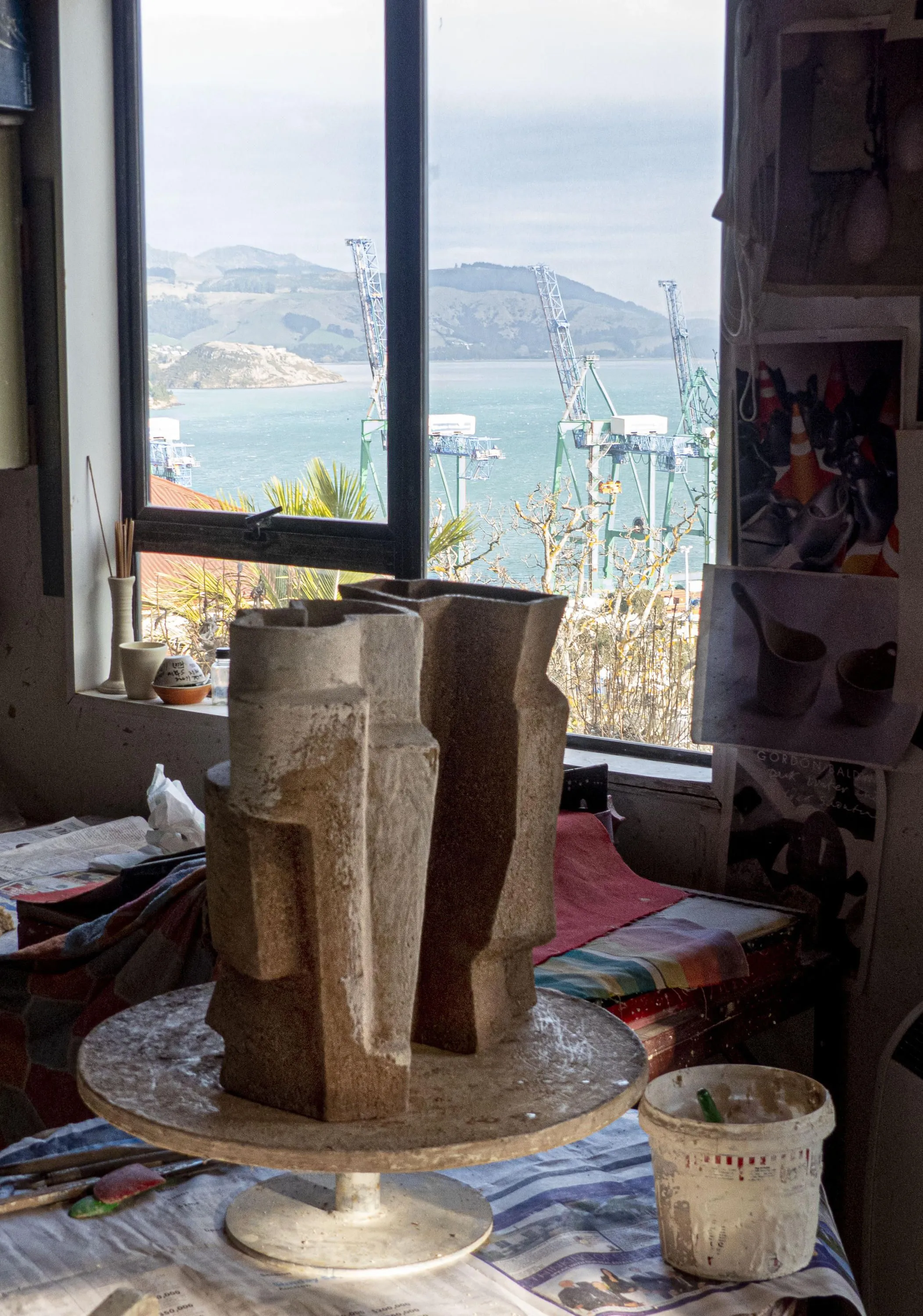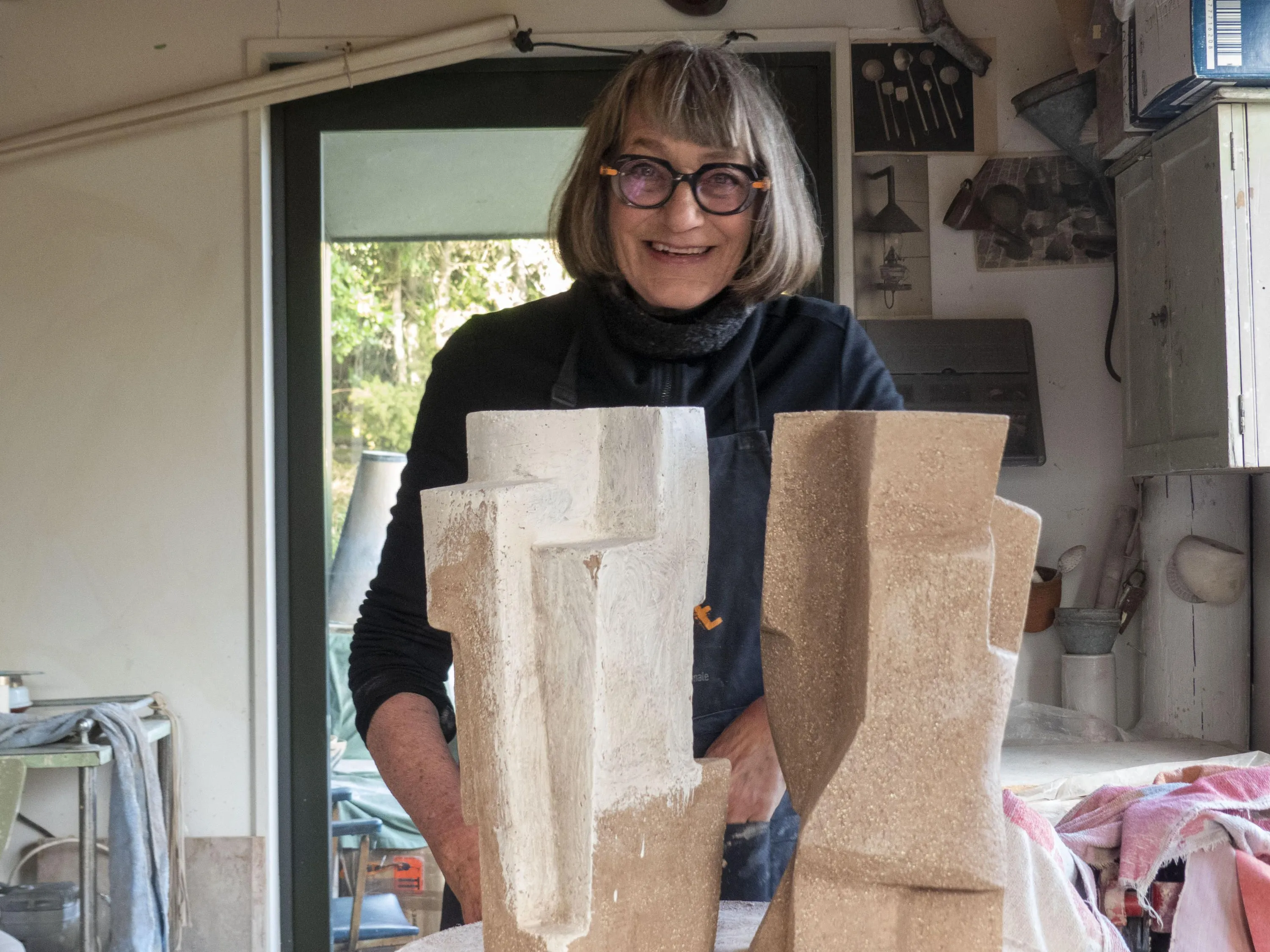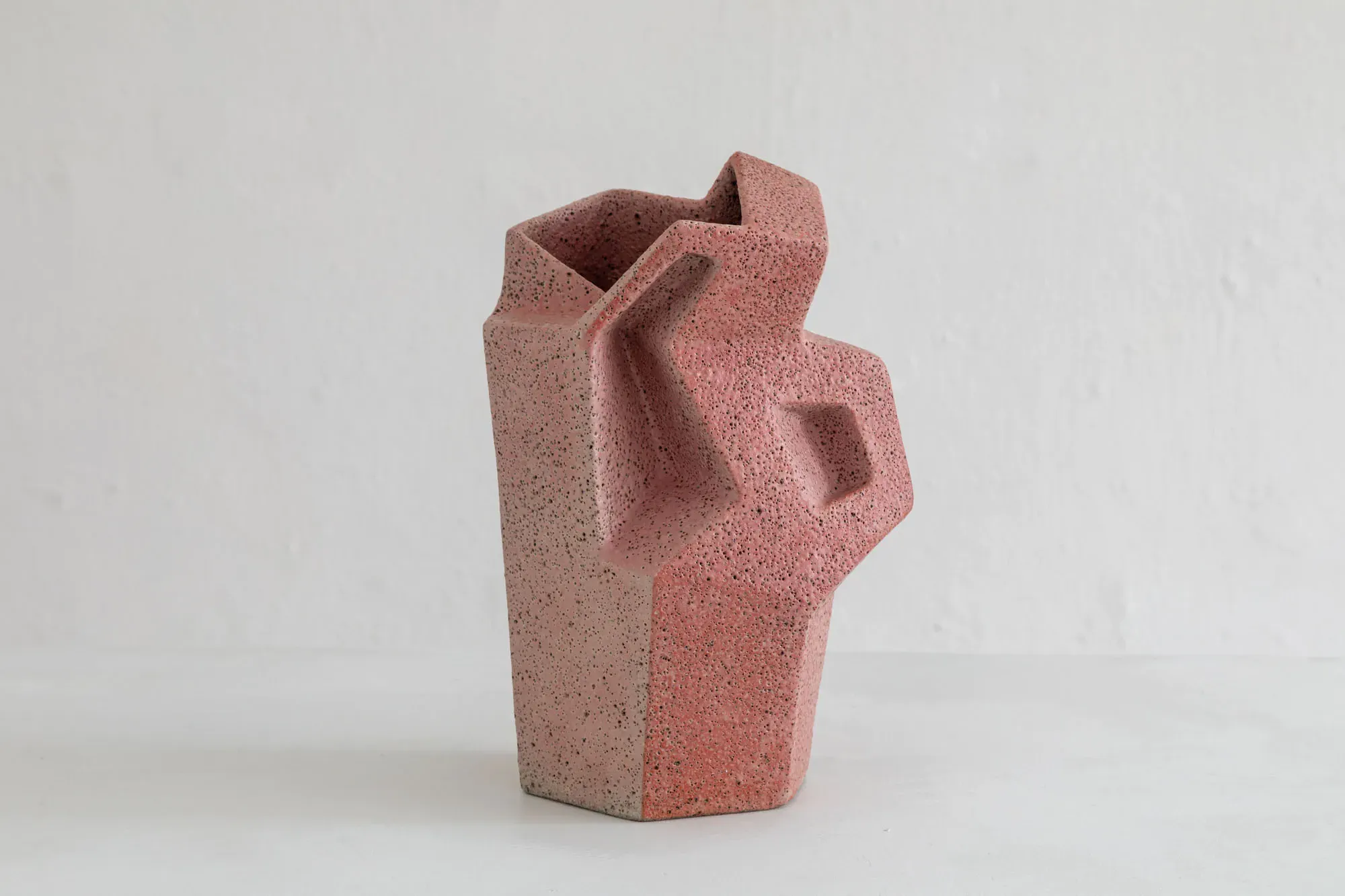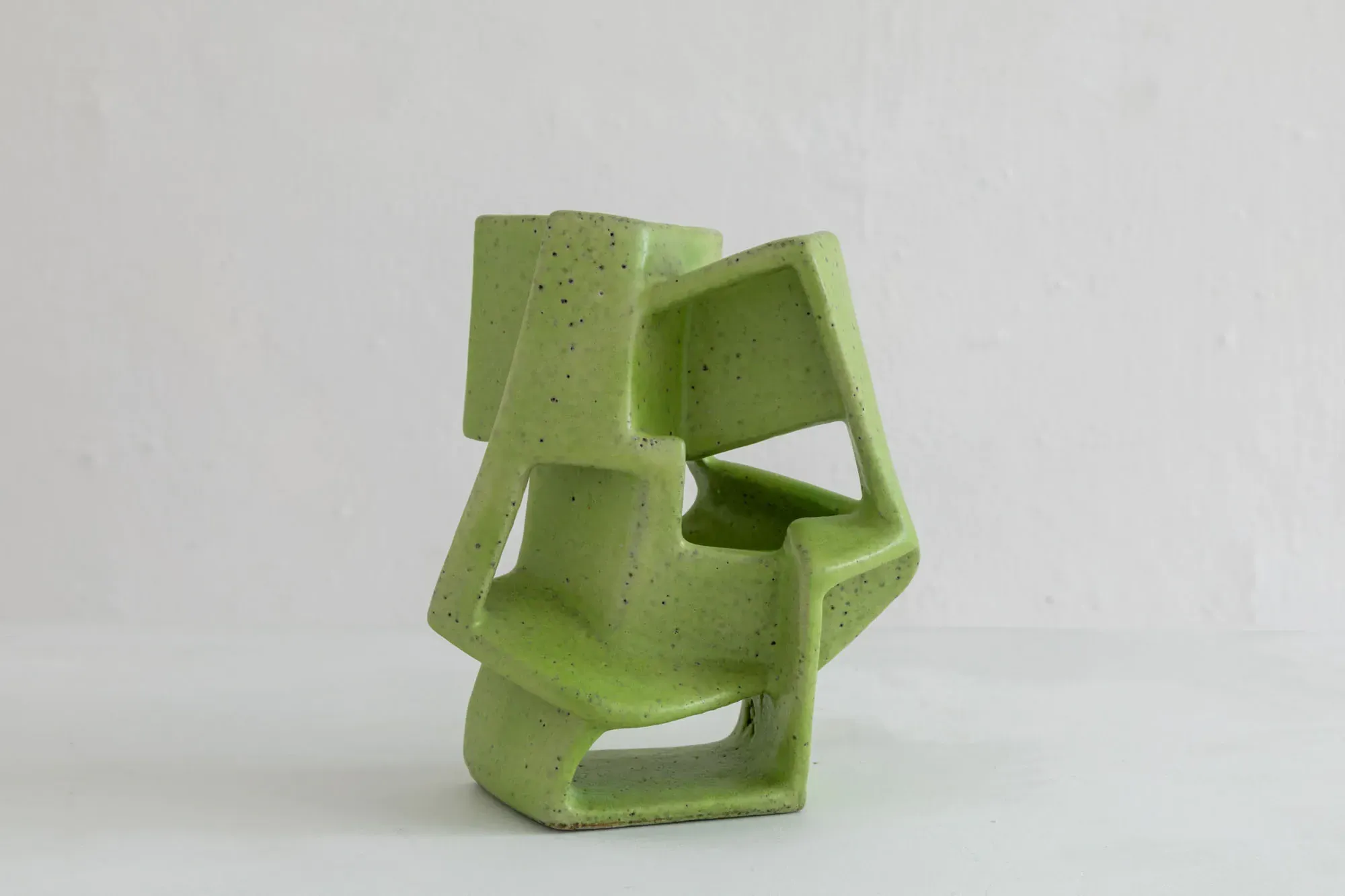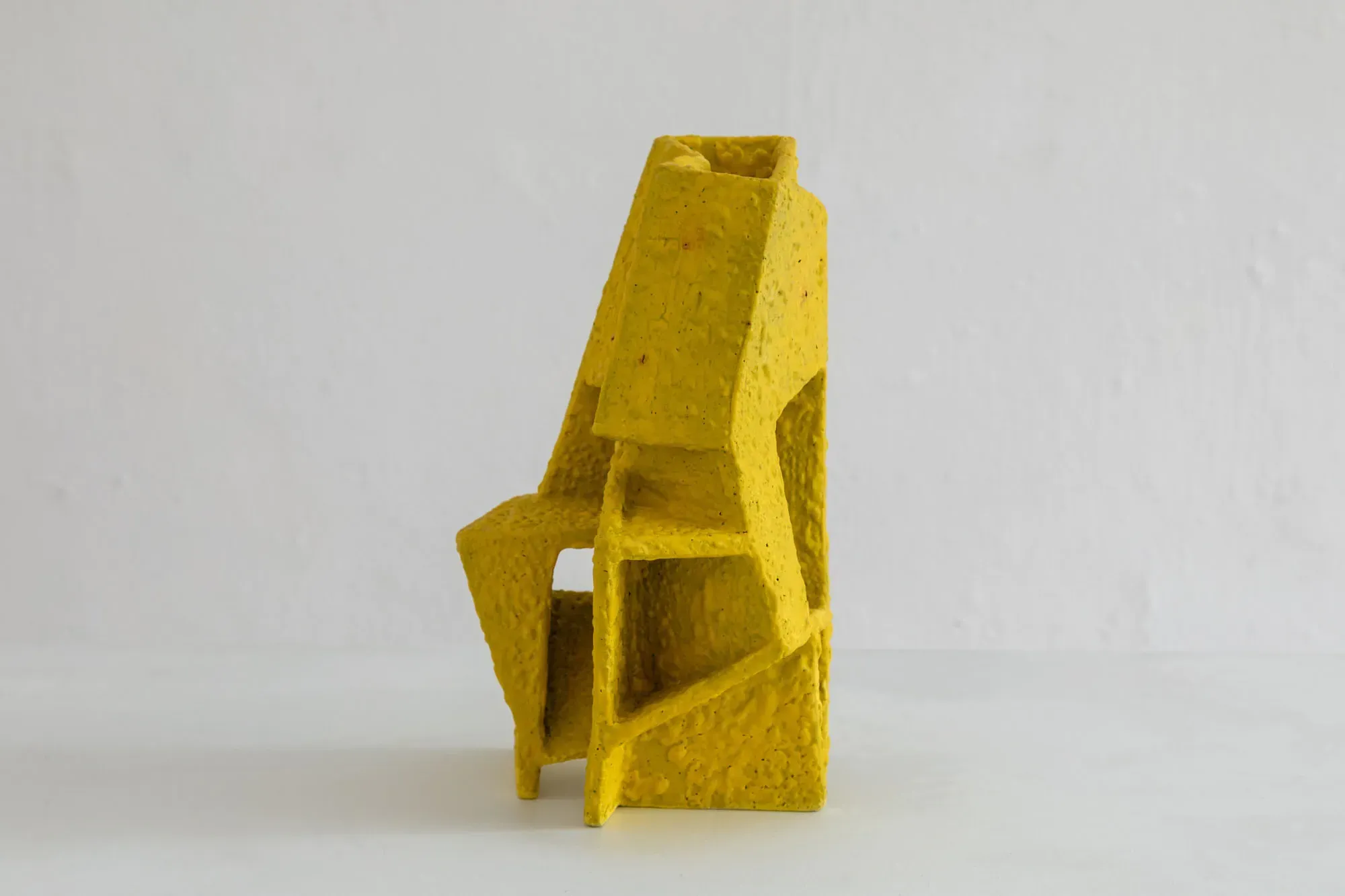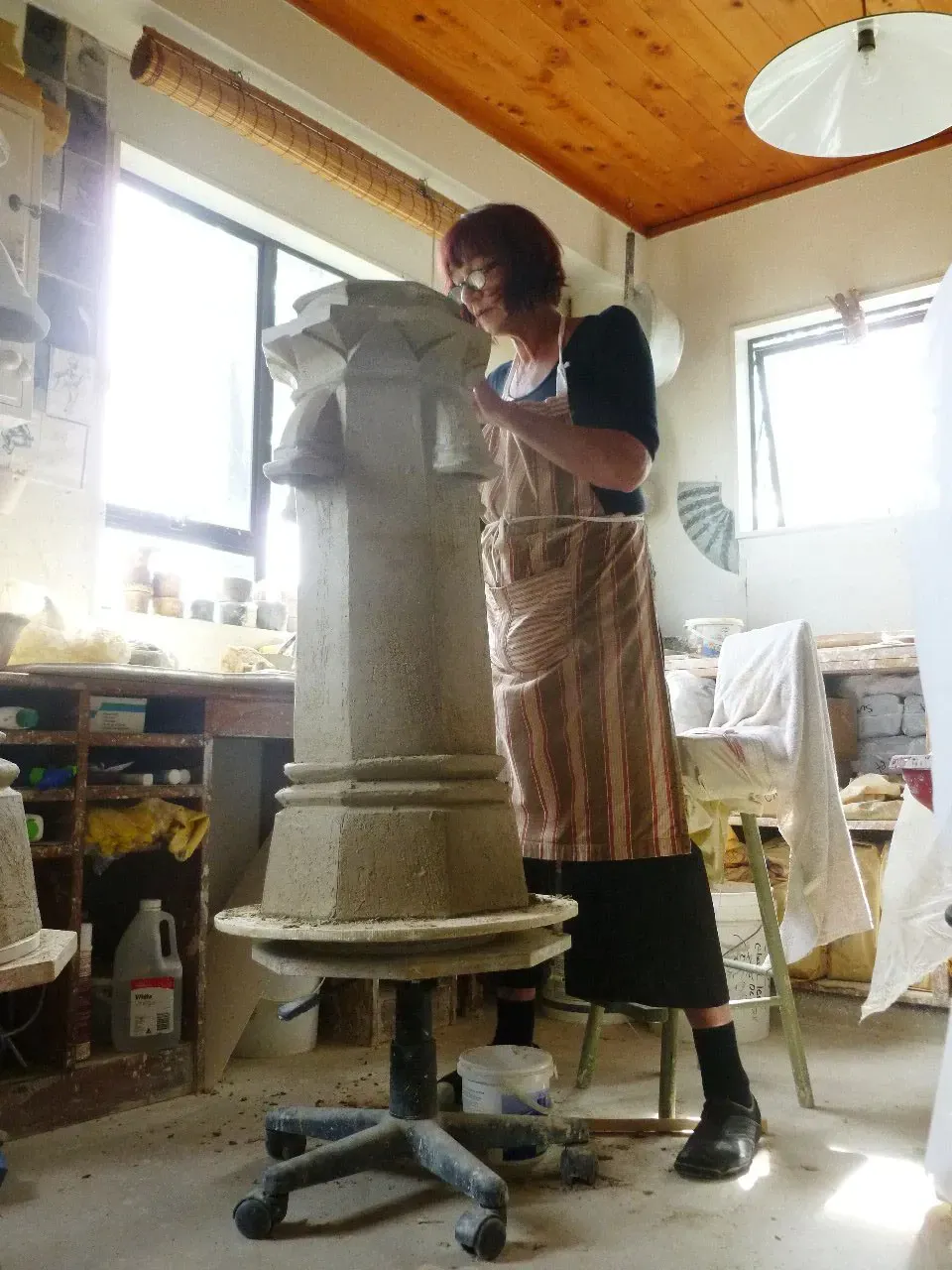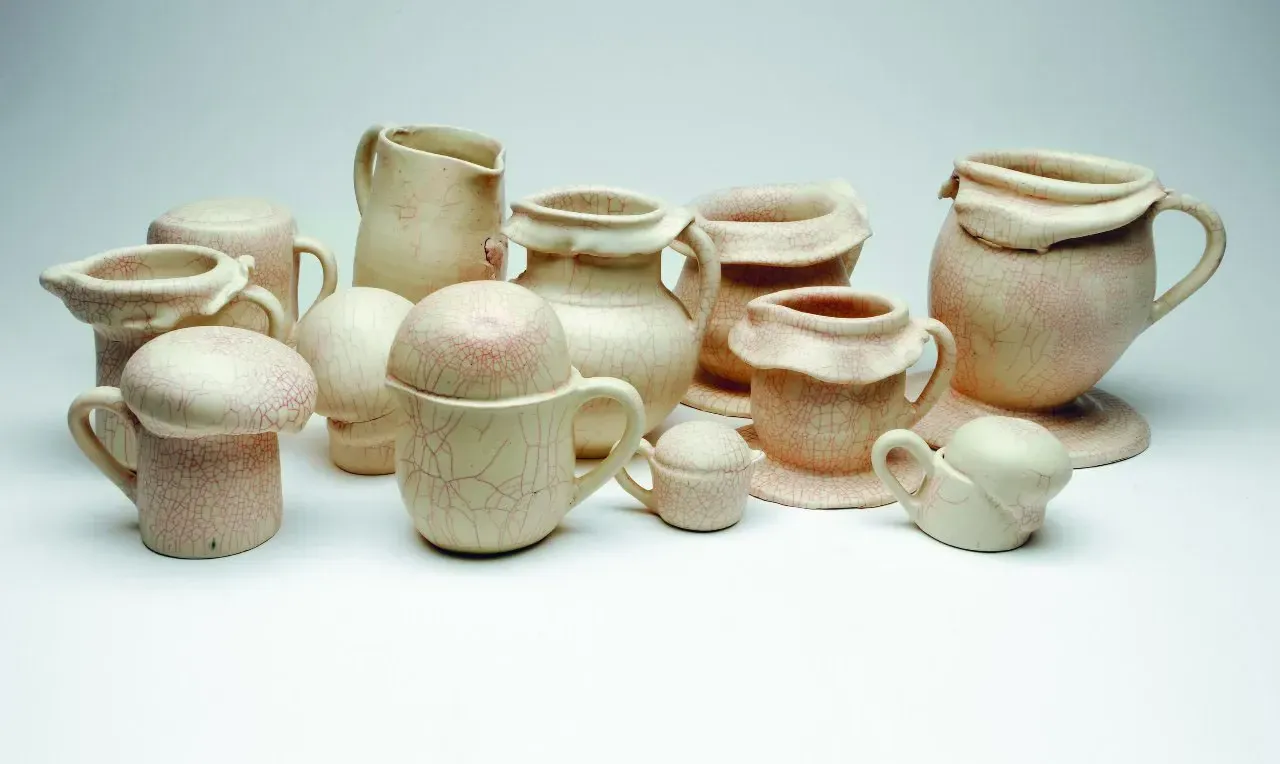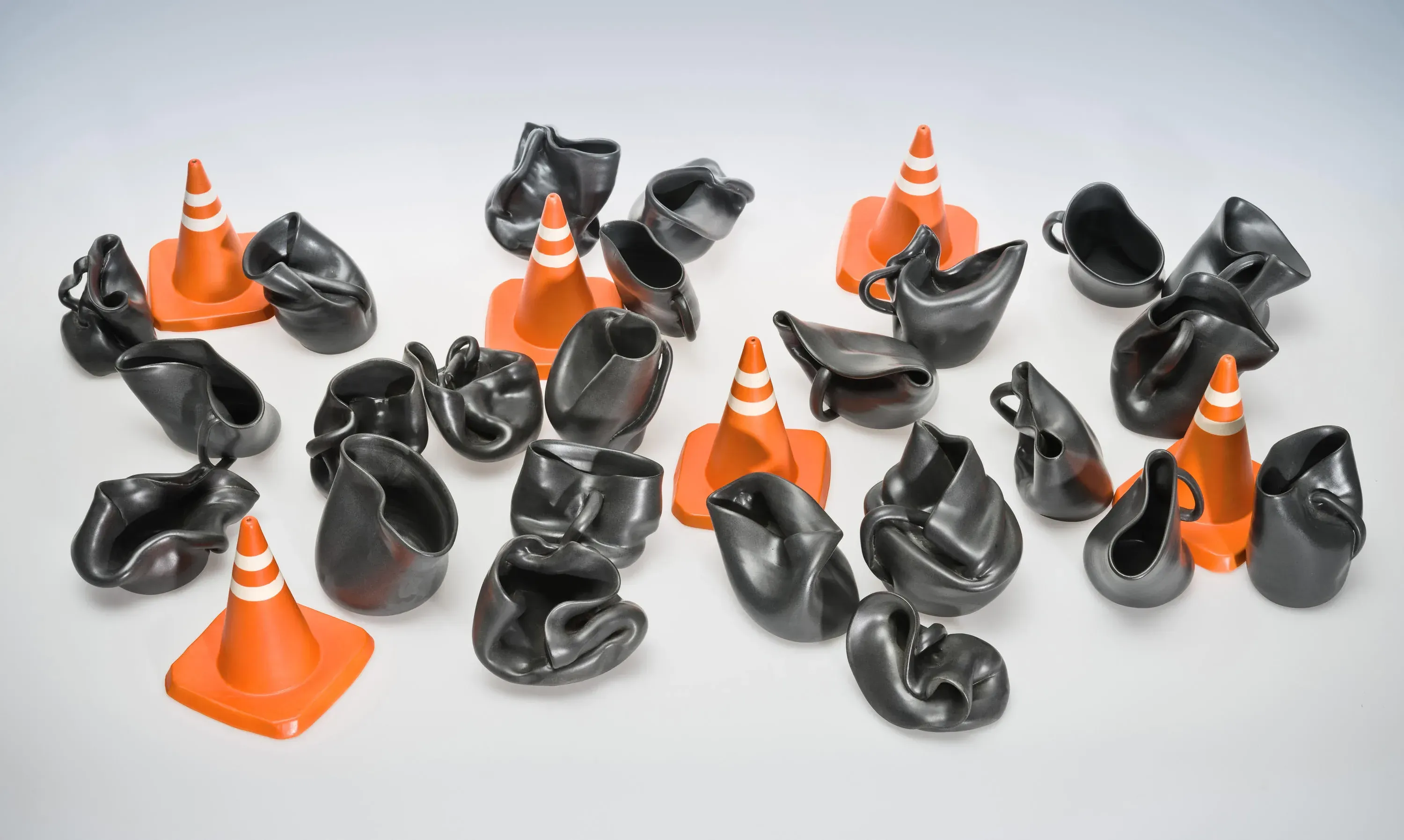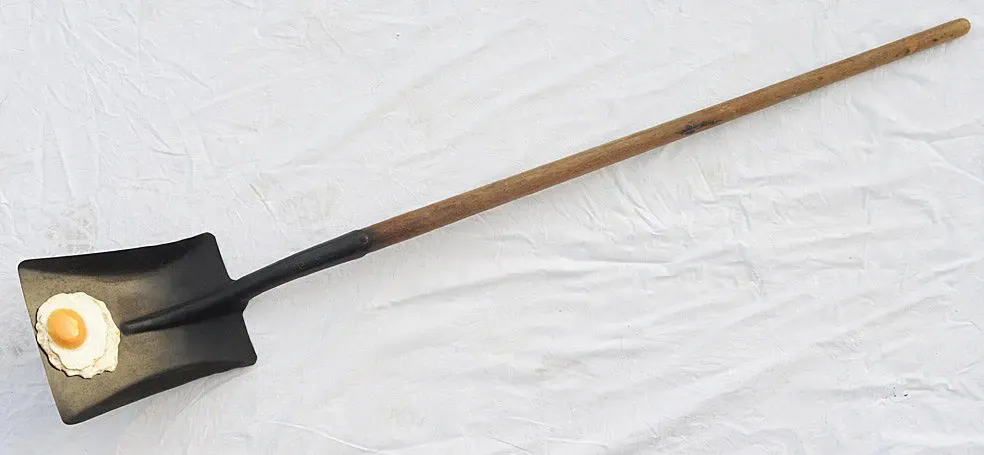Breaking the Mould
Written by
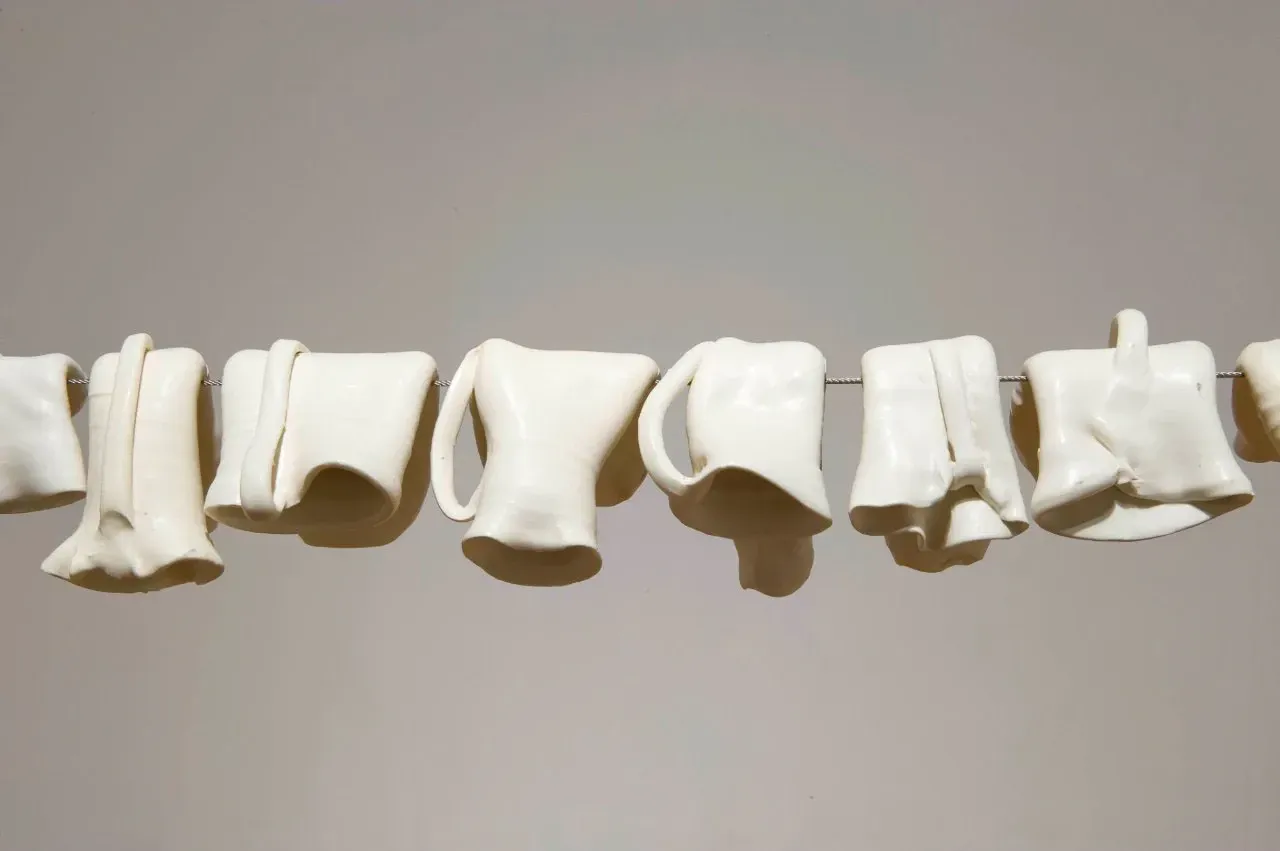
The creative process starts with that first paragraph, that first dab of paint or bar of music.
So it is for Lyttelton ceramicist Cheryl Lucas, for whom that first slab of cool damp clay sets the tone to an as-yet unknown destination.
“It's getting away from the idea of having an idea,” she explains.
"But invariably they end up being an idea. It's just that initial thing, to try and free myself up and produce things that surprise me. I don’t know where they’re going.”
Time on her Side
At the moment, Lucas is enjoying an unusual degree of freedom to allow the process to go where it will, enabled by her being awarded the 2019 Creative New Zealand Craft/Object Fellowship, worth $100,000.
It gives her the means to concentrate on her work for two years without worrying about income, as she prepares for a major exhibition at the Christchurch Art Gallery Te Puna o Waiwhetu, pencilled in for August 2022.
"It's a luxury but it's also, would you believe, a bit of a burden. Because I've been given this accolade and this money you think, ‘ooh everybody's going to be chomping at the bit to see how that pans out.’”
The exhibition – about half survey and half new works produced through the Fellowship - will be the first-ever solo show by a ceramicist at the CAG.
“There have been artists who have used clay but that is different in that they have not primarily been considered craftspeople, so it felt like a huge shift in thinking, my getting such an opportunity.”
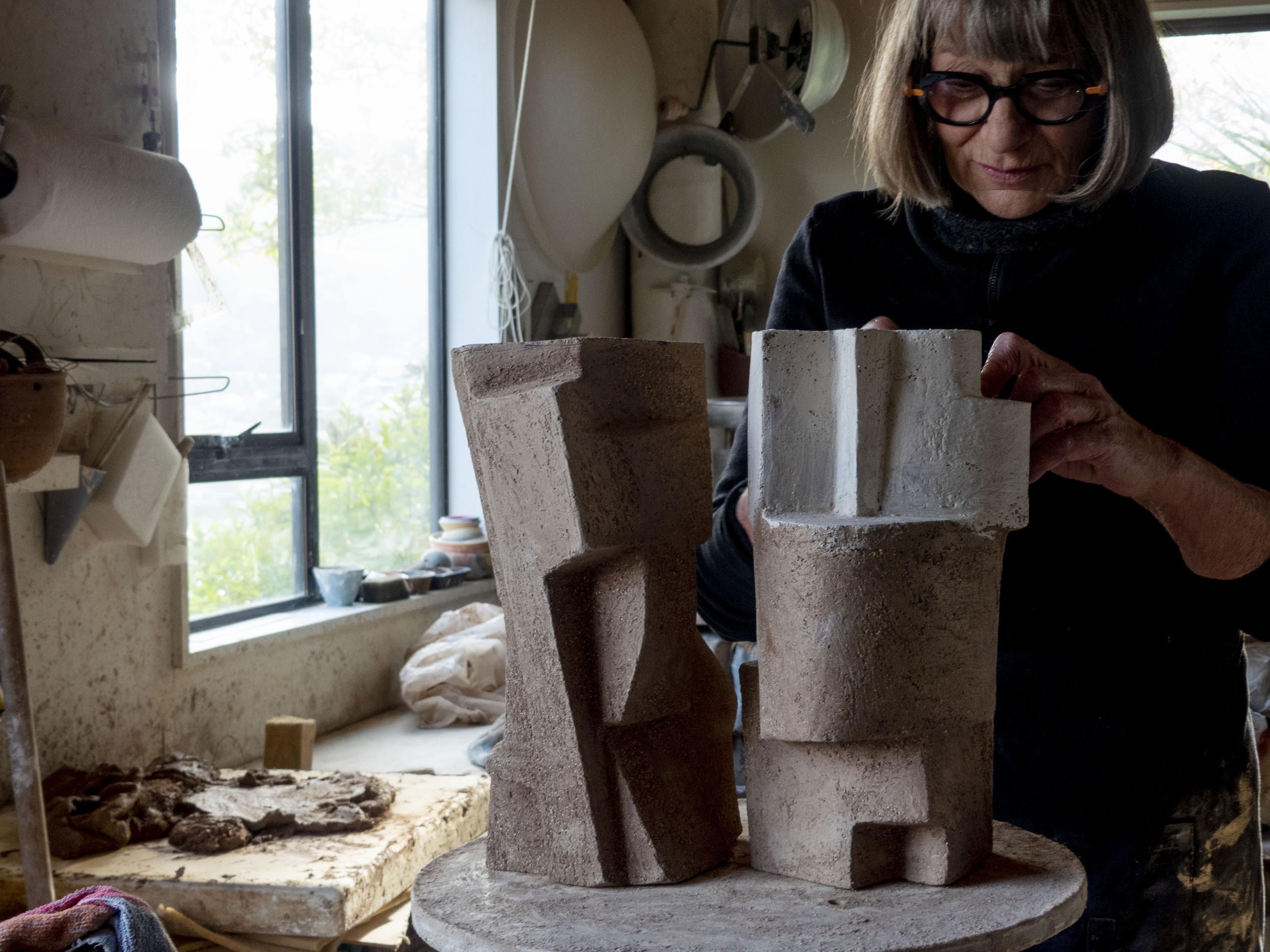
Cheryl is currently working on a pair of pieces, unfinished and as yet unnamed, although she notes that one has become more angular and male and the other more rounded and female. Photo: Nigel Malthus.
Make it Speak
Lucas says it has been a strange time working through the COVID lockdown.
“Although I've worked all the time, I haven't felt satisfied with anything so I've kept throwing things back in the bag and only kept a couple of things. It's a real experimental time.
“You keep on working on a piece until it actually feels as if there's nothing else you could add or take away to make it speak, or something is happening that's working as a cohesive whole,” she explains.
“It was Henry Moore who said if you knew what things were going to look like, you wouldn't bother making it because the problem would be solved.”
Currently she is working on a pair of pieces, as yet unnamed.
“One's more female, the other more angular, but I just resist saying more about them until they’re done because you don't know. Things happen.”
The pieces have reached the point where the clay is too dry to add further structure and all now hinges on the two-dimensional - the surface, its glazes and textures.
“What I put on this is going to dictate how it's read and what actually happens to it.”
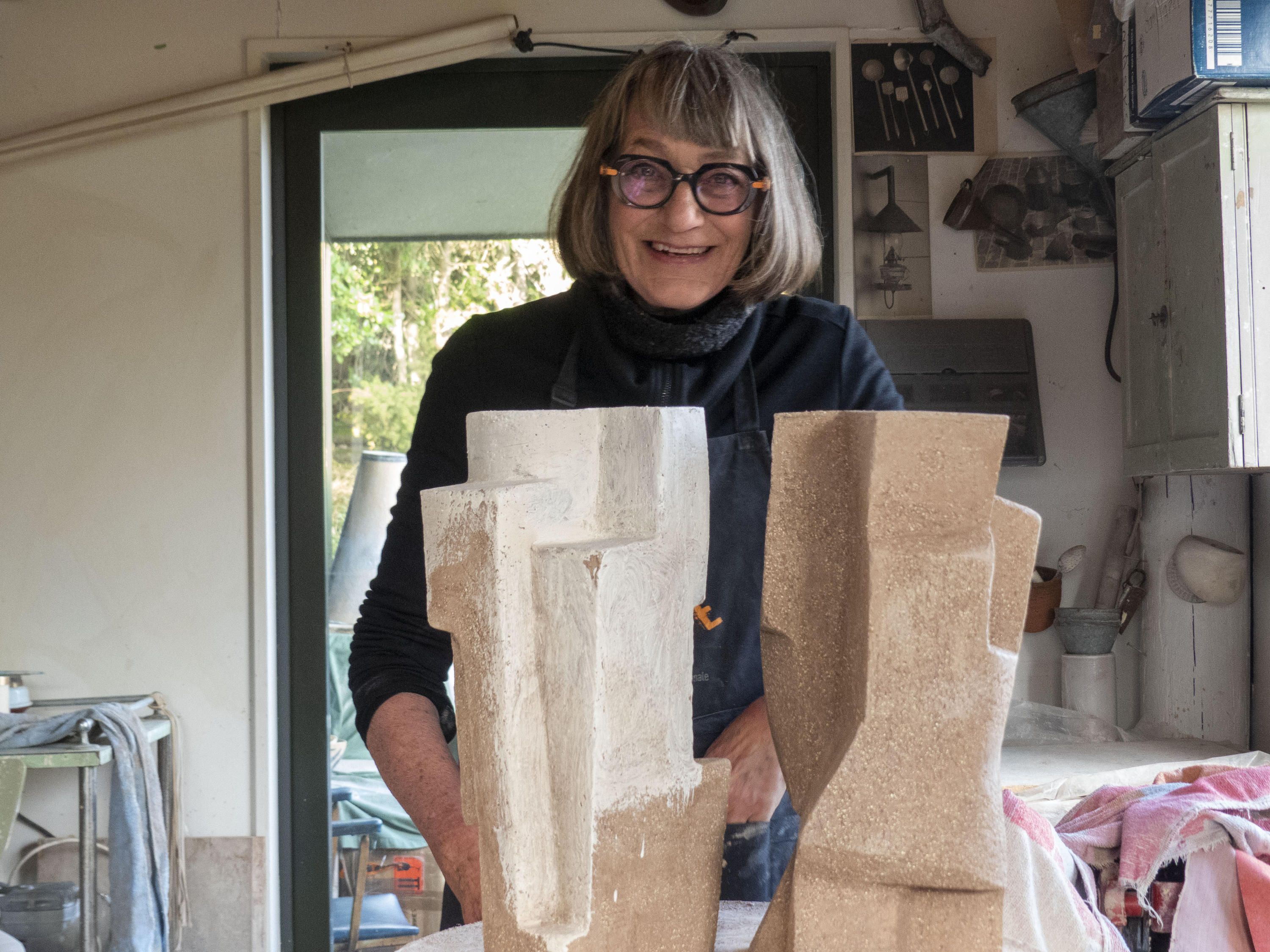
“It was Henry Moore who said if you knew what things were going to look like you wouldn't bother making it, because the problem would be solved.” Photo: Nigel Malthus.
Dirty and Dangerous
Lucas tells of Dunedin university days when she and fellow fine arts students scrounged bricks to build a “dangerous” kiln in the backyard of a student flat. It was oil-fired and pre-heated with a decidedly dodgy gas line from the kitchen.
“The guy who used to come and deliver the oil was like, ‘I'm not looking, I'm just not looking at this’.”
The kiln was so dirty when firing up from cold that it sent a plume of black smoke over the city and they only started it very early on Saturday mornings when few would see it.
That early ceramics training gave Lucas a solid technical grounding but she credits several years away from ceramics, concentrating on painting, drawing, lithography and printmaking, for the design skills she now relies on.
“What I'm doing now is really almost reverting back to some of those two-dimensional things that I learned earlier on … a really strict training in drawing and painting.”
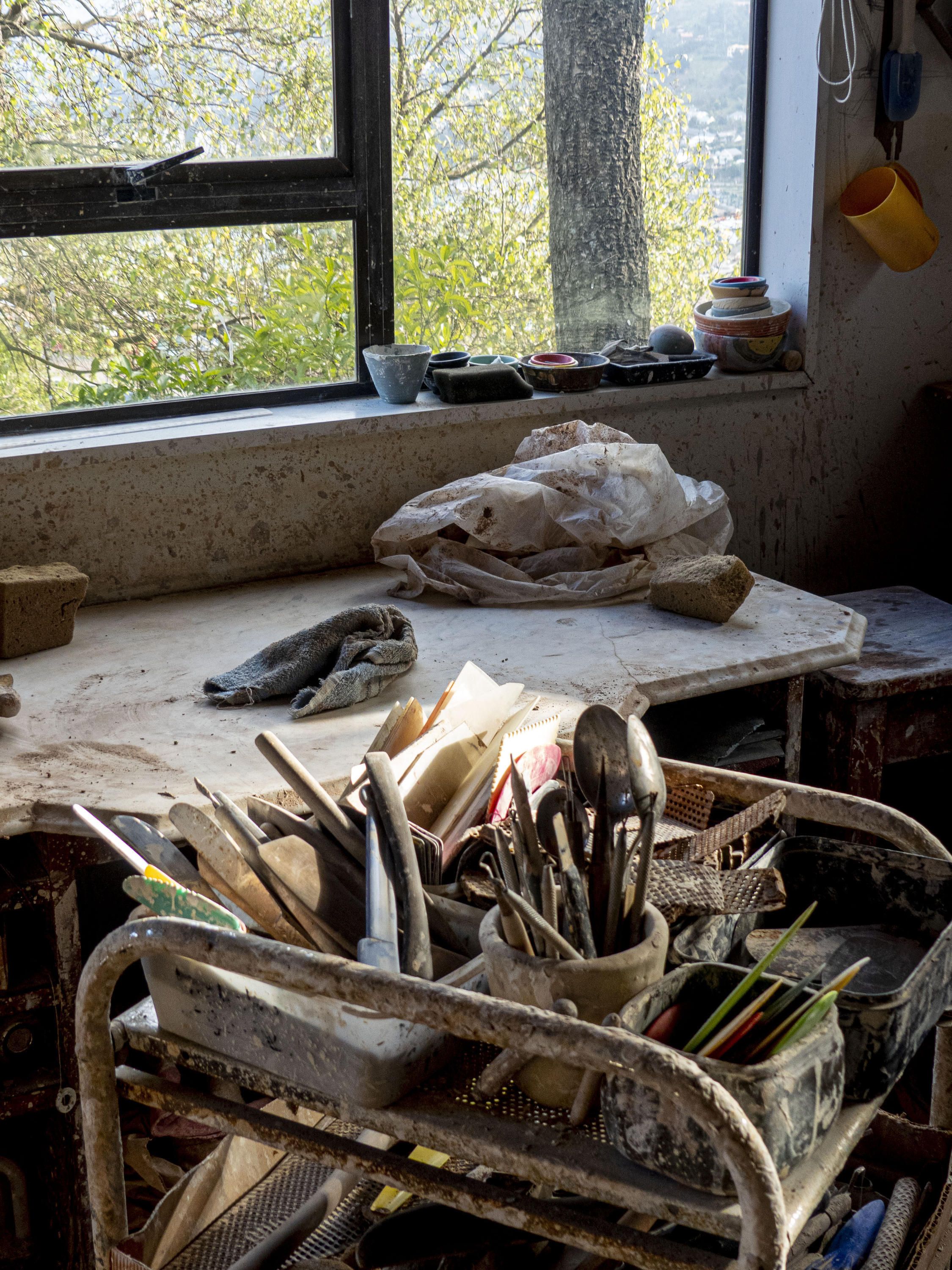
Cheryl Lucas’s Lyttelton studio. Photo: Nigel Malthus.
South Island Staunch
When Lucas won the Fellowship, she initially thought she wouldn’t put up any work publicly before the CAG show, then decided it would be crazy not to.
“You need to have little deadlines for yourself, otherwise it becomes a bit amorphous.”
That led to her participating in a Wellington Festival of Ceramics show at the McLeavey just before lockdown. Another show at the Sarjeant in Whanganui was postponed but is now expected to go ahead nearer the end of the year, as will a solo show at her dealer gallery, The National, in Christchurch.
Lucas adds that while she has been offered representation by some North Island galleries, as a patriotic South Islander she prefers to maintain the relationship with the National and its “jolly hard-working” director Caroline Billing.
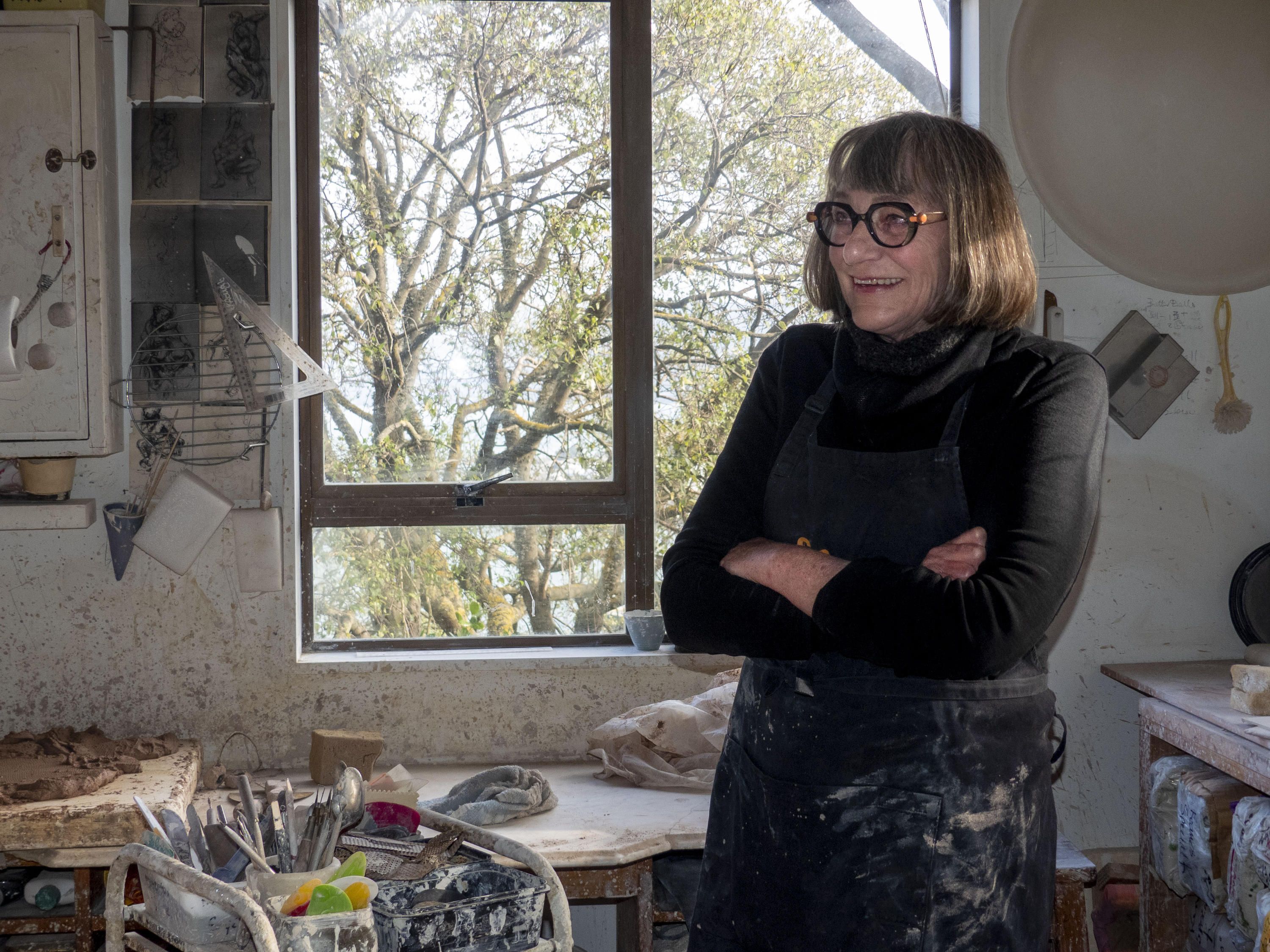
Cheryl Lucas in her Lyttelton studio. Photo: Nigel Malthus.
Social Sculptures
During lockdown, Lucas also participated in a project for the Blumhardt Foundation, which invited a number of artists to take over its Instagram account for a week each during lockdown.
“Basically I did a bit of a back catalogue, just to show people where I've been and what I've been doing.”
Three works - Unvaxxed, Blooming Teaser and Bug Mantis – which featured in both the McLeavey show and the Blumhardt Instagram are powerful pointers to where she is heading artistically in 2020.
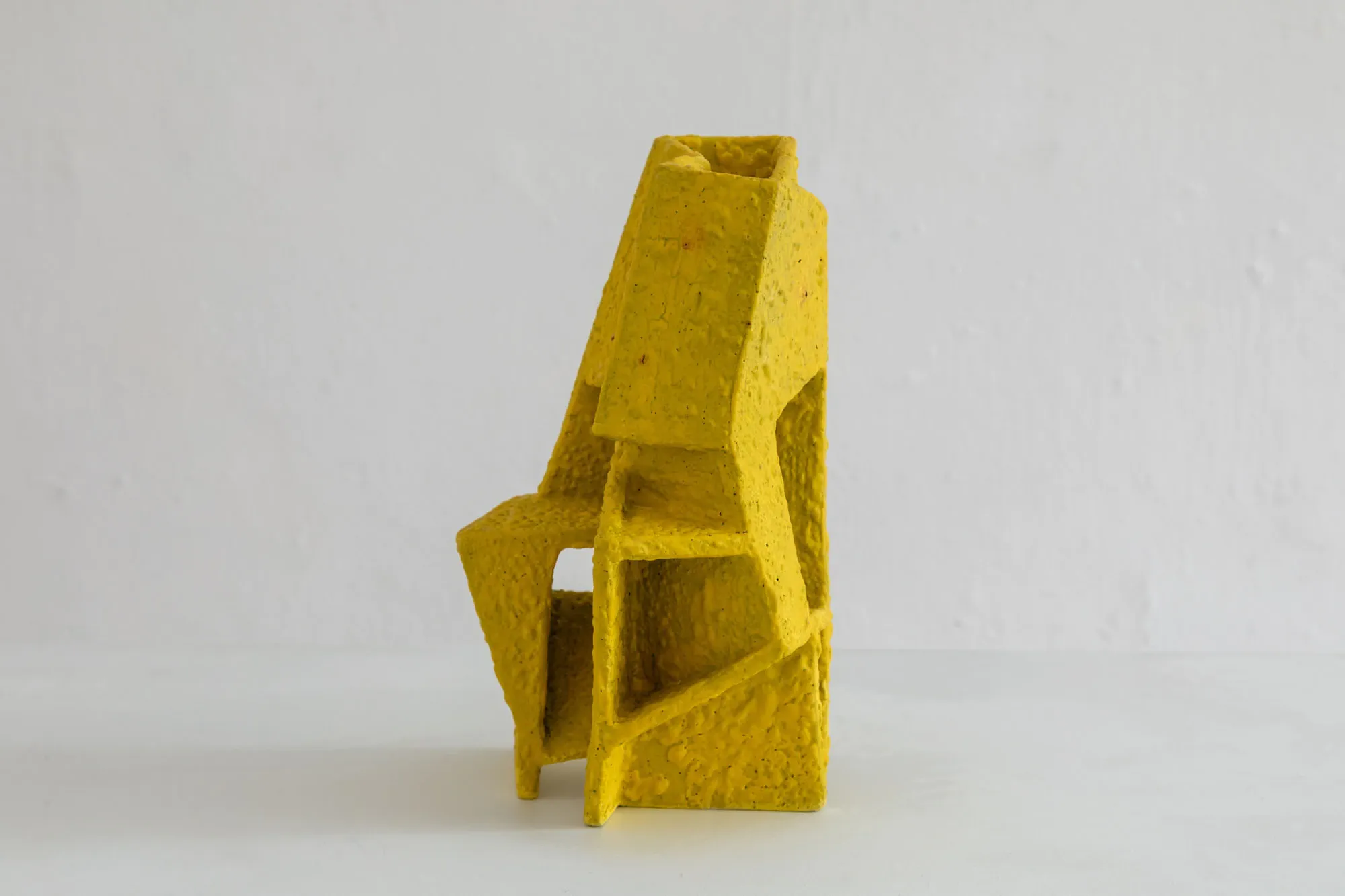
Unvaxxed Cheryl Lucas 2020. Photo: Russell Kleyn.
She explains: “When I am working, I am fundamentally just trying to make sense of the world around me and possibly also trying to alleviate some of the anxiety I feel about the state of the planet and human stupidity. Unvaxxed happened at the end of the measles outbreak and at the start of the Coronavirus. I was thinking about human vulnerability and fragile infrastructures in the face of major events. How can we live good lives when we are on edge, worried about the potential destructive effects of things that we cannot control but can suddenly completely change our lives?
“Earthquakes, nitrate leaching, viruses, atmospheric carbon dioxide, campylobacter, deadly insects etc; none of these are obvious threats, in that you cannot actually see them, but they lurk nonetheless.
“I live above a port. I know that foreign bugs and insects could be coming here any day. Which ones are the potential destroyers of humans and crops? They all look innocent - do I squash them all, just in case?
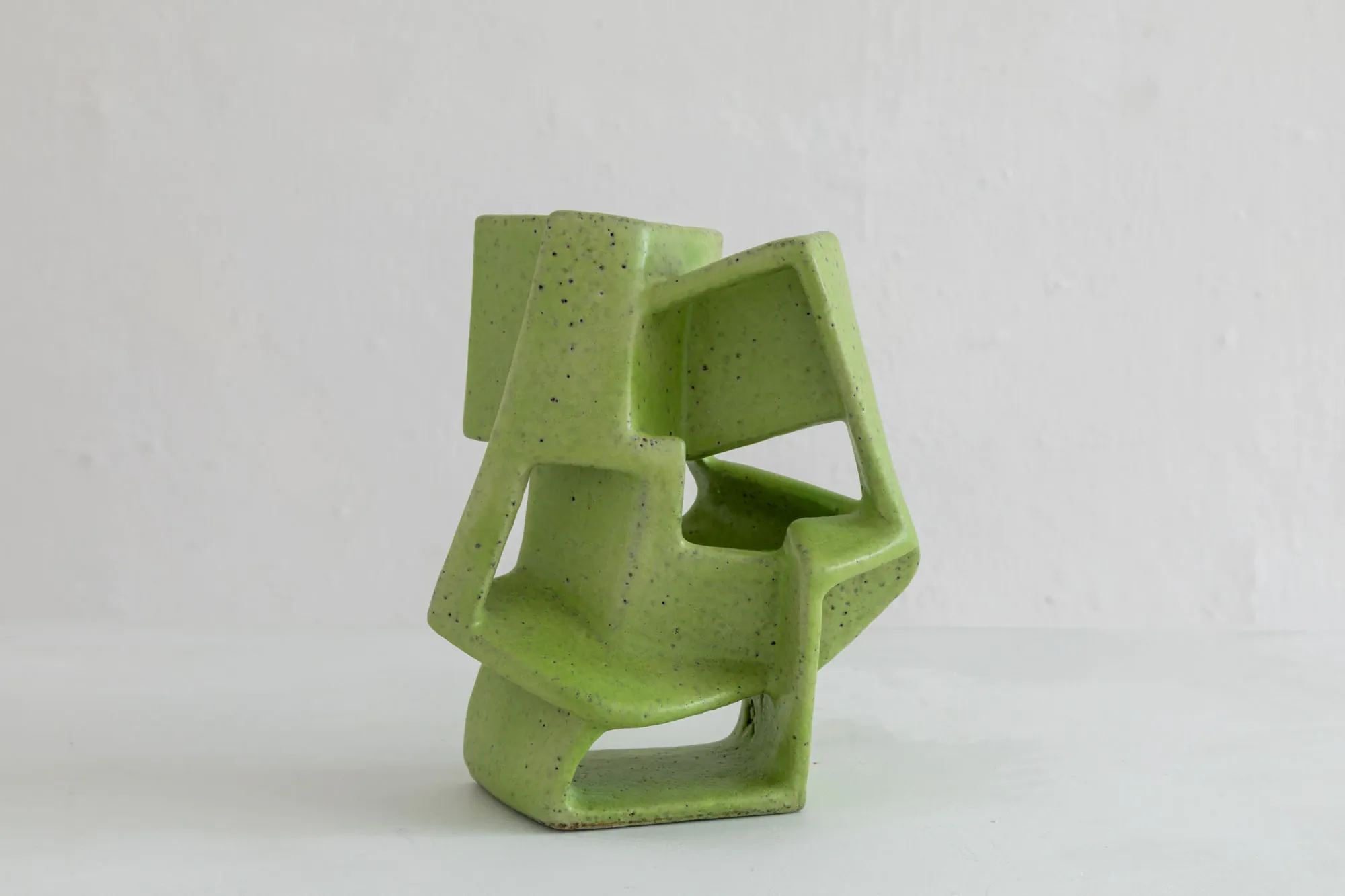
Bug Mantis Cheryl Lucas 2020. Photo: Russell Kleyn.
“Bug Mantis is the innocent lurker. Unvaccinated people look no different from vaccinated, they all look the same until disease strikes. Unvaxxed bares all, fragile open-sided structure and pox-like surface, explicit in its condition.
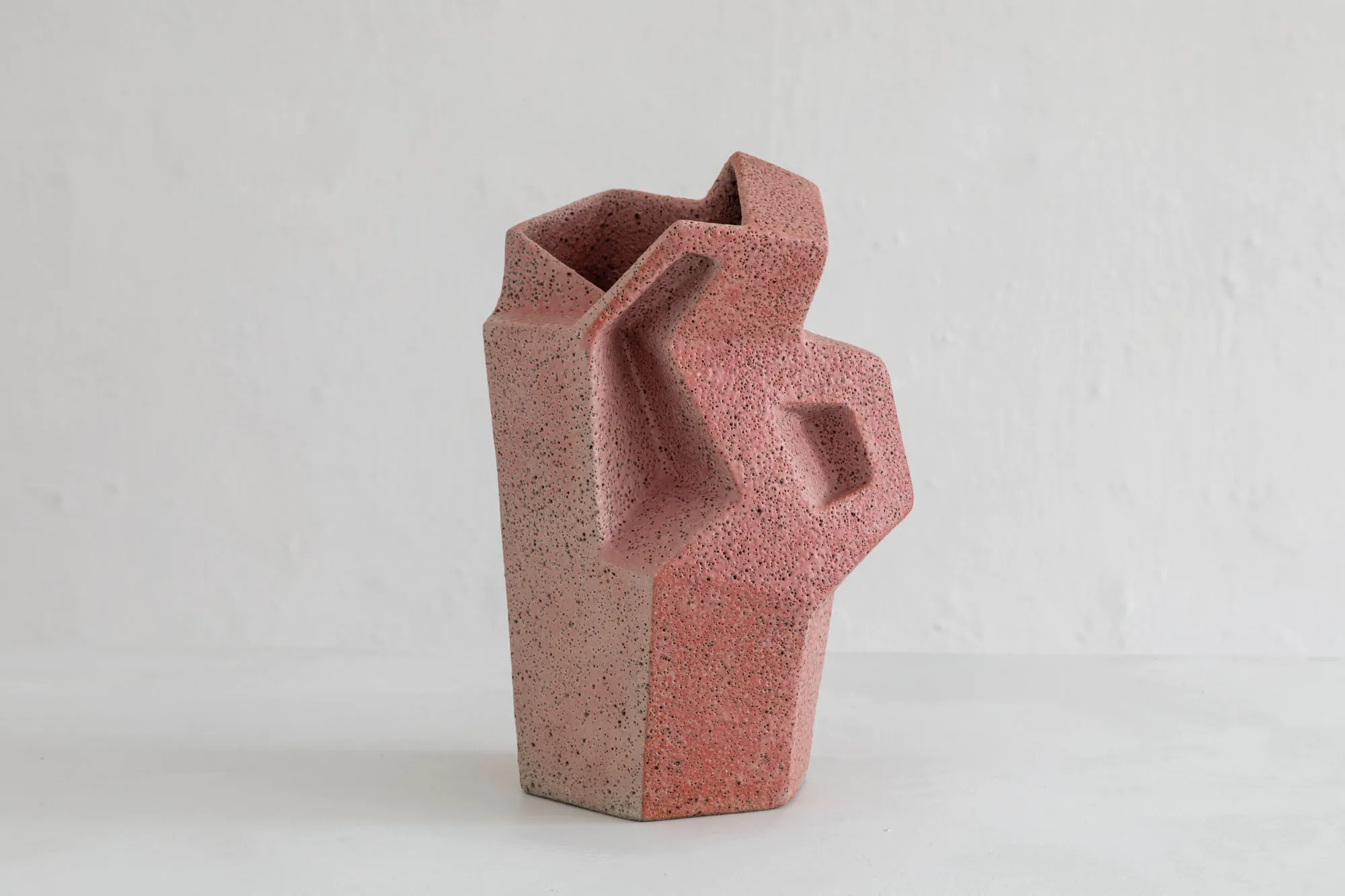
Blooming Teaser Cheryl Lucas 2020. Photo: Russell Kleyn.
“A little different is Blooming Teaser, a vase but not as you think of as a vase. A construction that would not be out of place made in concrete and coloured grey but is instead pink.
“Nothing is perhaps quite as it seems or as we are used to seeing it. For me, I find it increasingly difficult to not think the worst and to be constantly concerned about what might happen but I am fundamentally an optimist!”
“I use clay as the most fundamental malleable material we have to build in three dimensions. It is a fragile but enduring medium. It speaks of what has happened in history; we can plot our human existence through shards. I'm constantly aware of this and the life of the pieces I make. I place some clay (in this case a thin slab) and another slab is required to make the first stand alone.
“One part works with another and then with the whole, not unlike a composition in painting or music, until there are no more pieces required to make the form and idea complete. Surfaces are worked and re-worked, fired and re-fired until I'm satisfied they speak about the whole form, make sense of the form and nothing more can be done to further explain the idea.”
-- Cheryl Lucas, April 2020.
Born into a Central Otago farming family, Lucas has a Diploma in Fine and Applied Art from Otago and a Post-Graduate Diploma from the Wimbledon College of Art, London.
She taught ceramics and drawing at Ara Institute for 18 years, has exhibited regularly both here and overseas and attended residencies in Australia and China.
Her work is held in several collections including the Museum del Cantir Spain, FuLe Contemporary Art Museum China, Wallace Collection, Christchurch Art Gallery, Canterbury Museum, Lincoln University and Ara.
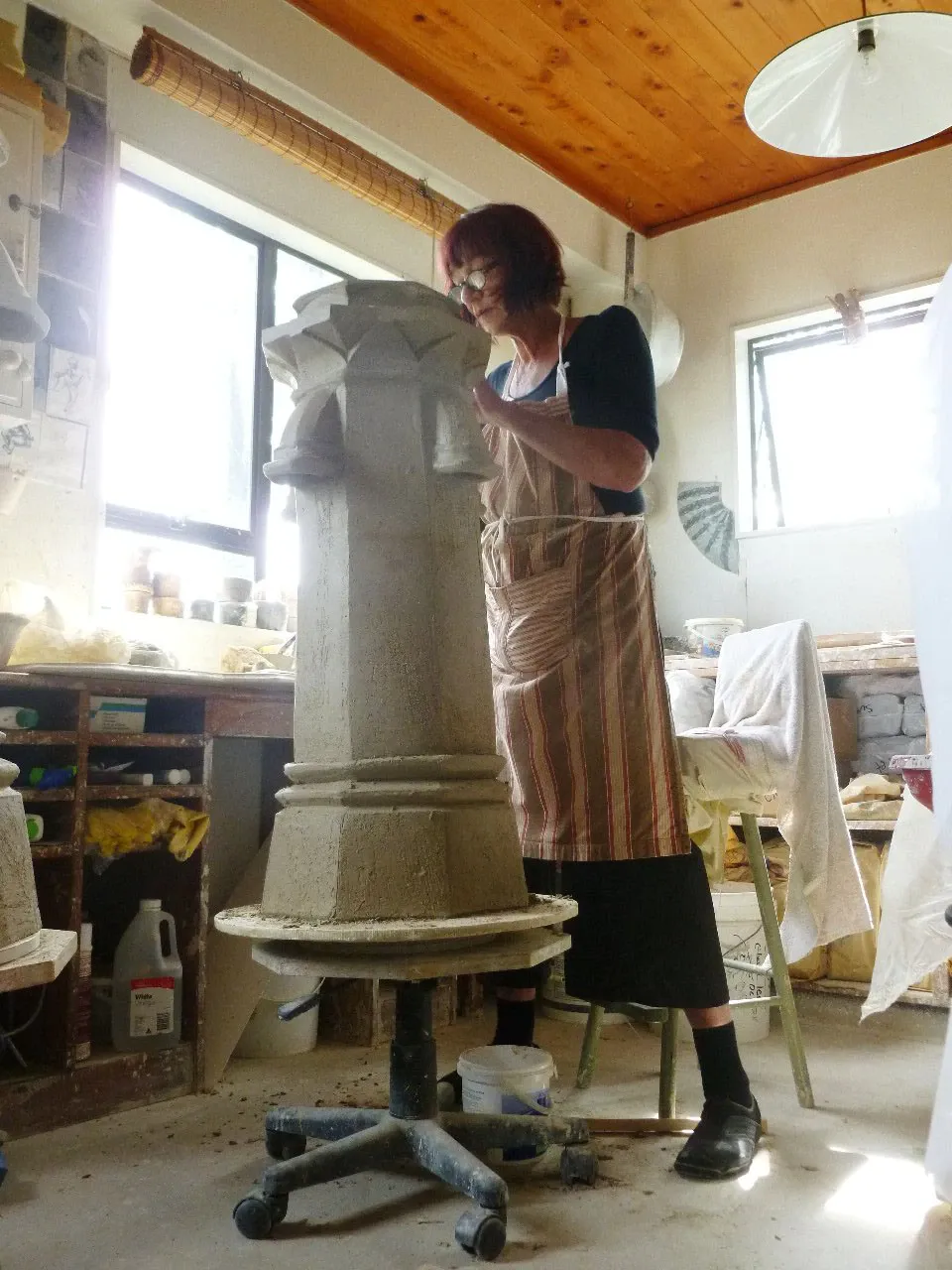
Cheryl works on a replica chimney pot for one of Christchurch’s heritage buildings, the Sign of the Takahe, to replace one damaged in the quakes. Photo: Supplied.
Cracked Pots
Following the Christchurch earthquakes, she made many replica architectural ceramics, primarily chimney pots, to replace Victorian and Edwardian items lost from many significant buildings in the city.
It was a rewarding task but also ultimately frustrating as she realised there was nothing “inherently Aotearoa New Zealand” in the designs she was having to faithfully replicate.
“It's not like they were made in Britain and shipped out. They were made here, but everything looked like it had come straight from Britain.”
Her reaction to that was three purely decorative contemporary chimney pots for the 2017 Vanished Delft exhibition at Auckland’s Pah Homestead, which broke the colonial mould by using colours taken from the New Zealand landscape and motifs suggestive of tukutuku weaving.
“Doing those chimney pots was hugely interesting because of that relooking at that whole colonial history.”
Blood and Guts
Lucas says she has never been able to make anything that doesn't have some kind of reason for being.
“I find it very difficult to produce something just pretty. It's got to have some kind of reason, although one could say everything is going to have, fundamentally, a reason.”
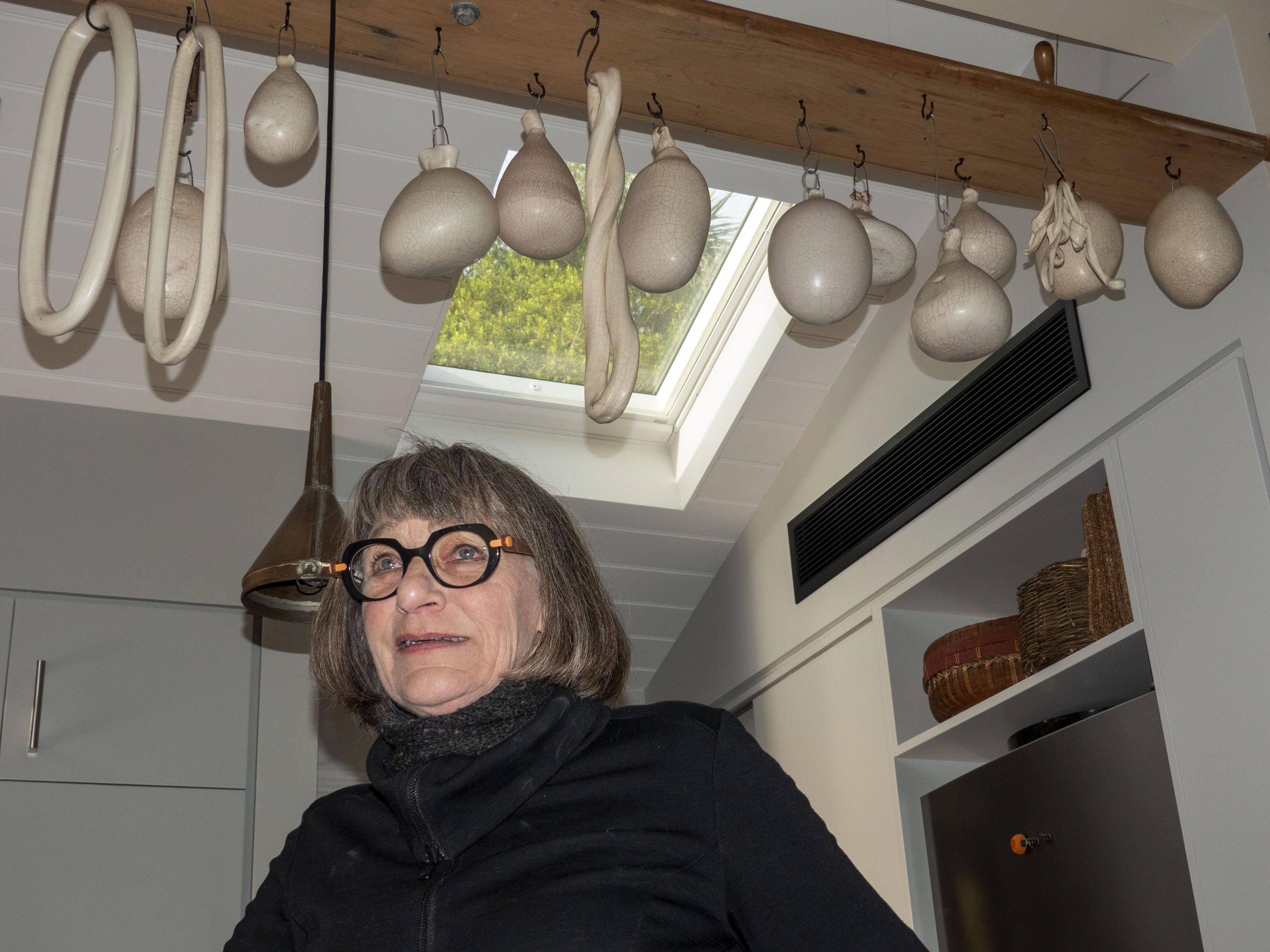
A portion of Cheryl’s Harder Larder installation now hangs in her kitchen and will likely form part of her upcoming 2022 CAG exhibition. Photo: Nigel Malthus.
Her Harder Larder installation of 2011 came out of the Christchurch earthquake experience when even supermarkets were closed and established “larders” were missing.
“It’s got to have an idea behind it. I couldn't just produce those without thinking about what was going on at the time.”
The work won first prize at that year’s Sculpture on the Peninsula, the South Island’s largest outdoor sculpture exhibition, held biennially on the Loudon Farm, Banks Peninsula.
As her installation space, Lucas was offered the farm’s working slaughterhouse.
“They had just killed a beast in there, so there was blood and hair and flies around. They were going to clean it out for me and I said ‘no, no, just leave it as it is’ because it was kind of amazing.”
“So I hang all my pieces in there and there are saws that cut bones hanging up, and there are some revolting things in there and there’s a tap dripping over there on the wall and it drips down and the water gathers with the blood and the hair and it goes down a drain here.
“It had a kind of a smell to it, the whole room, so it was a really good site to put this.”
Judge Warren Feeney praised the installation as “a work rich in narratives: The land as benefactor to humanity’s needs and a landscape soiled in blood.”
Body of Work
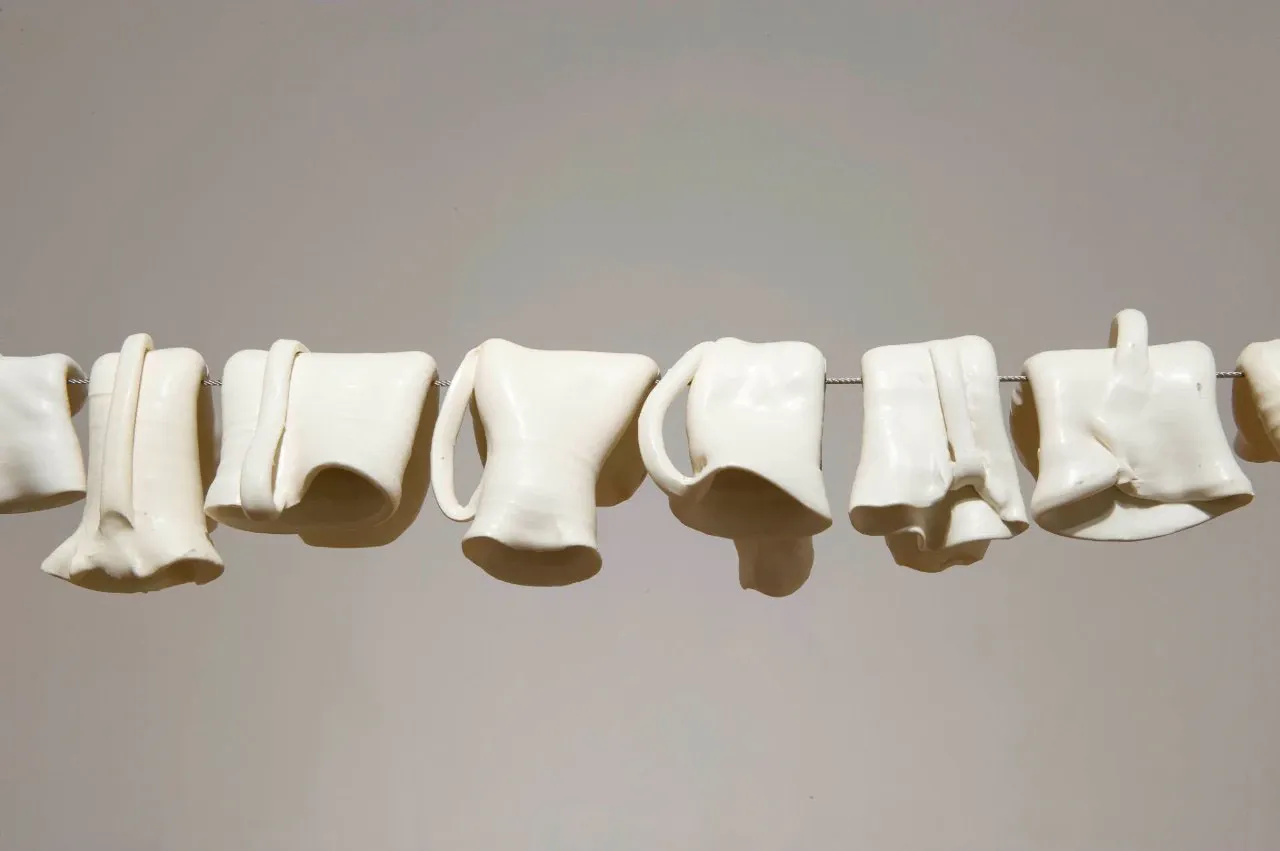
Detail of the Jugskin Fence, which is now on outdoor display at Lincoln University as part of the University Collection. Photo: Stephen Goodeough.
Lucas’ farming roots are also evident in Jugskin Fence, originally part of her Dip Paddock show at the now-defunct Campbell Grant Gallery in Christchurch and now displayed as part of the Lincoln University collection. It mimics rabbit skins draped over a wire fence, but with milk jugs.
“My father used to come into the kitchen and say ‘have you got a jug I can borrow?’
“We'd always lose jugs to the farm; he'd mix up some horrible bloody thing in it and you'd never want it back again,” says Lucas.
“So I used the jug as a symbol for depletion.”
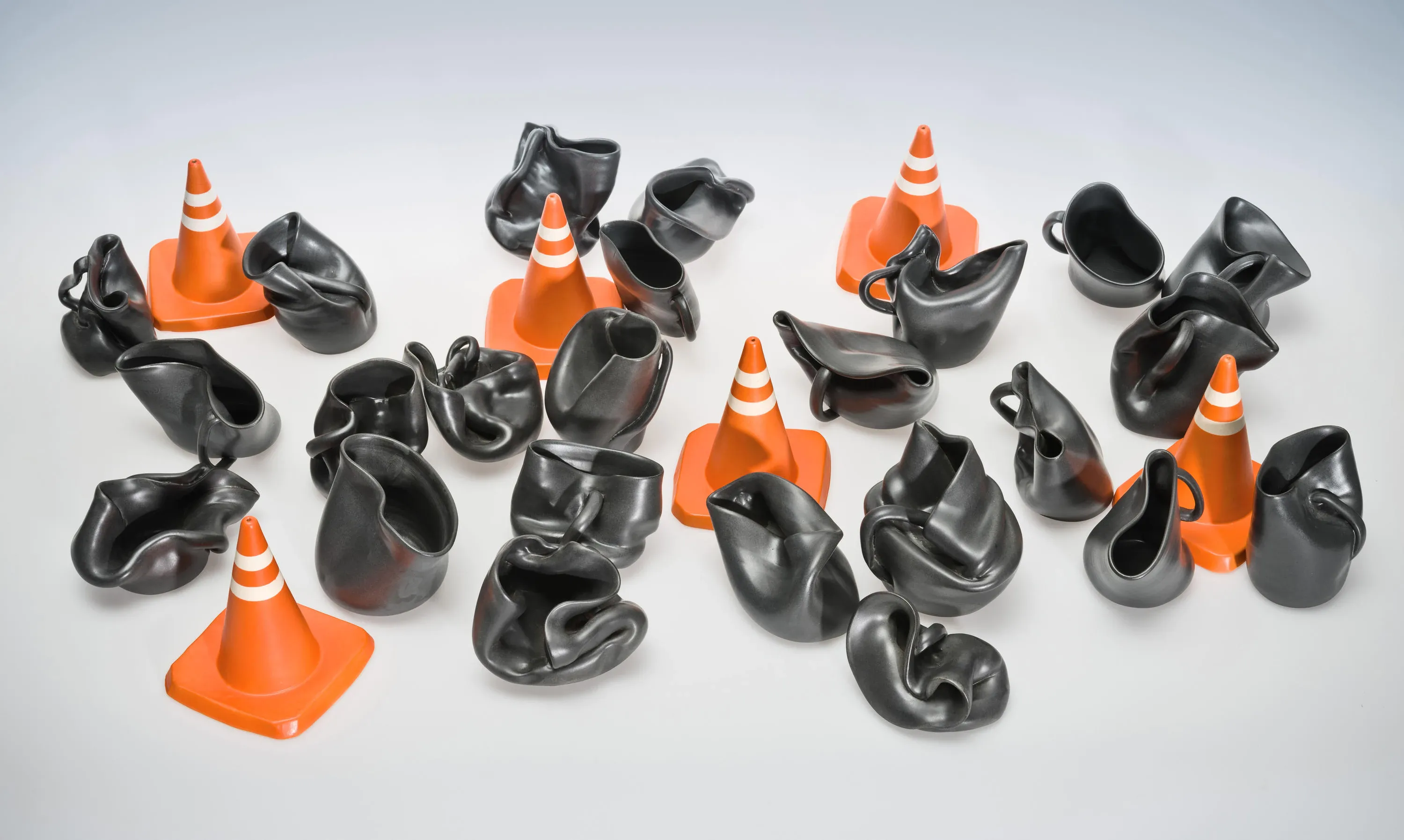
Cheryl’s Royal Muntin Ware commemorating the Christchurch earthquakes: the grey glaze was formulated to match the colour of the liquefaction which erupted throughout the city. Cheryl tried using liquefaction silt itself in the glaze but being high in iron it resulted in a rusty colour. Photo: Christchurch Art Gallery
Harder Larder, Jugskin Fence, another earthquake-inspired set titled Royal Muntin Ware Ref.No.6.3.2011, and a set titled Milkstock which won a Portage Ceramics Merit Award in 2017 are all likely inclusions in the survey part of the CAG exhibition.
What will appear in the new works part of the show now depends on what flows from Lucas’s hands over the next two years.
Watch this space.
